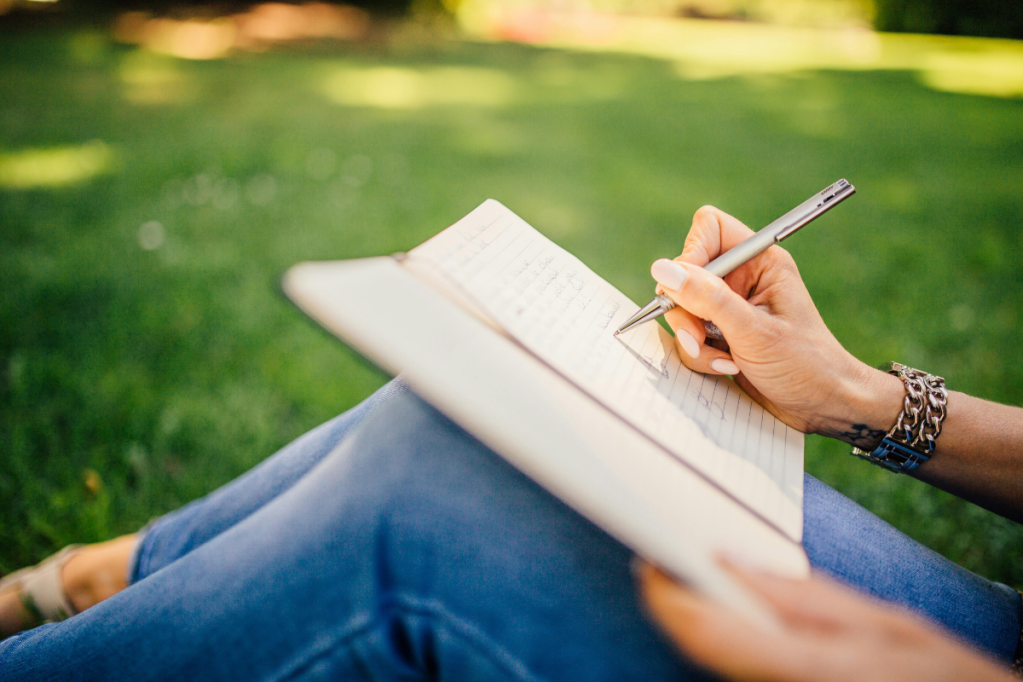How to find your writing confidence with journalling rituals
Imbue your writing practice with a sense of ritual, and witness your creativity and confidence bloom, says Jackee Holder

Create your own journalling ritual, and witness your creativity and confidence bloom, says Jackee Holder in this month’s column.
This month, I’d like us to explore the practice of introducing a writing ritual; a series of actions you take before starting a journaling session. Almost 20 years ago, I had an early morning ritual that began with a dawn run and finished up under the shade of a sprawling oak tree in my local park. Every morning, I would sit under the tree’s canopy and write in my journal. (If you’re looking for inspiration, try our own Psychologies guided ‘Balance your life’ journal!)
This space at the start of my day was often where I did my best thinking. It was home to a deeper intimacy with myself, where my confidence and self-belief took root and blossomed. It was a space where my creative juices flowed, and where great ideas and solutions showed up without hesitation.
Rituals thrive when activated regularly. Rituals can be simple or elaborate, or as individual and original as we are. Novelist Toni Morrison spoke of rising each morning in the dark, making a cup of black coffee, and then sitting and watching as the light came in.

According to Morrison, the sacredness of her morning ritual was captured in the space between the dark and the light. Morrison also believed that the arrival of the light at the same time each morning enabled her writing.
Writing rituals are a great way of signaling to both the mind and the body that it’s time to write. Rituals help mute the noise that’s constantly clamoring for your attention. Rituals slow you down, providing space to exhale in your day. Decide on where you will engage in your writing ritual and what time is best.
Simple rituals are easier to put into practice. A writing ritual can be as straightforward as taking three long, deep breaths before planting the first letter or word on the page. I’m a visual learner and I get great satisfaction from sticking images of gorgeous trees randomly throughout my current notebook or journal.
Want to try this out? Gather together five to ten images of beauty that speak to you, and use these as visual rituals. Take a few seconds before you start journaling to really drink in one of your images mindfully. What do you see? How does the image make you feel? How does the image impact your body?

Rituals are a great resource for slowing you down. I love the weighty feel of a fountain pen nestled between the tips of my fingertips. The presence of the pen reminds me of my young body bent over the page, learning to write italic handwriting from a forward-thinking arts teacher in primary school. Time stood still as I concentrated on forming the letters on each page.
Finally, think outside the box when it comes to your own personal writing ritual. During a more recent co-writing session, a late joiner missed the poem prompt normally shared at the start of the session. To help ease her in, I suggested copying the poem out word for word by hand in her notebook.
This simple writing ritual using poetry can feel prayerful. Copying allows the mind and body to be in the moment. Writing by hand is a sensory experience allowing time and space to absorb and connect with the words in a novel way. The writer described the process as expanding her space to absorb the words and images in a way that was unexpected. This is now her writing ritual at the start of her journaling time each week.
Focus on Getting a Writing Ritual in Place
So, this month, let’s focus on getting a writing ritual in place. Which of the six senses – sound, smell, sight, texture, taste, and intuition – will open the doorway into the ritual that will support your journal writing for the next 28 days? Repetition is the mother of all skills. Here are some writing ritual prompts to get you started:
- Write the word ‘ritual’ at the top of a blank page of your journal or notebook and free write for seven minutes.
- Write about who you’d like to give some light to and why.
- Write about a ritual you loved engaging in as a child, in as much detail as you can.
- What rituals do you enjoy as an adult, and how could parts of these be adapted for your journaling practice?
- Describe in detail the writing ritual or rituals you will try out for the next 28 days.
Visit jackeeholder.com and follow @jackeeholderinspires for more inspiration.
Words: Jackee Holder. Images: Pexels.









